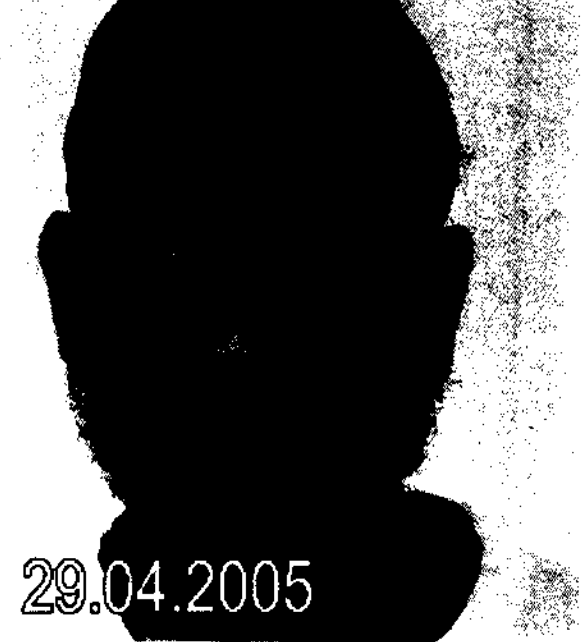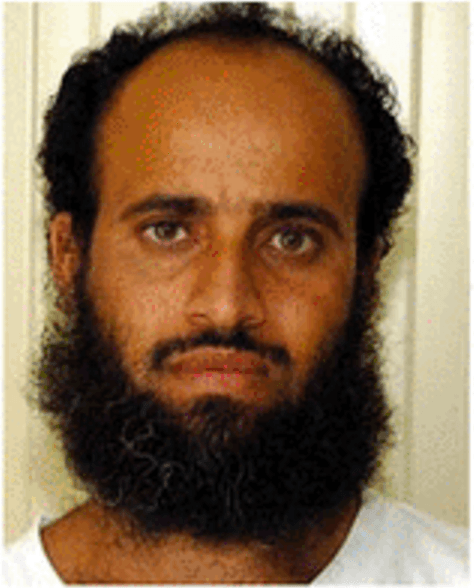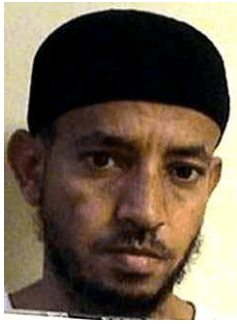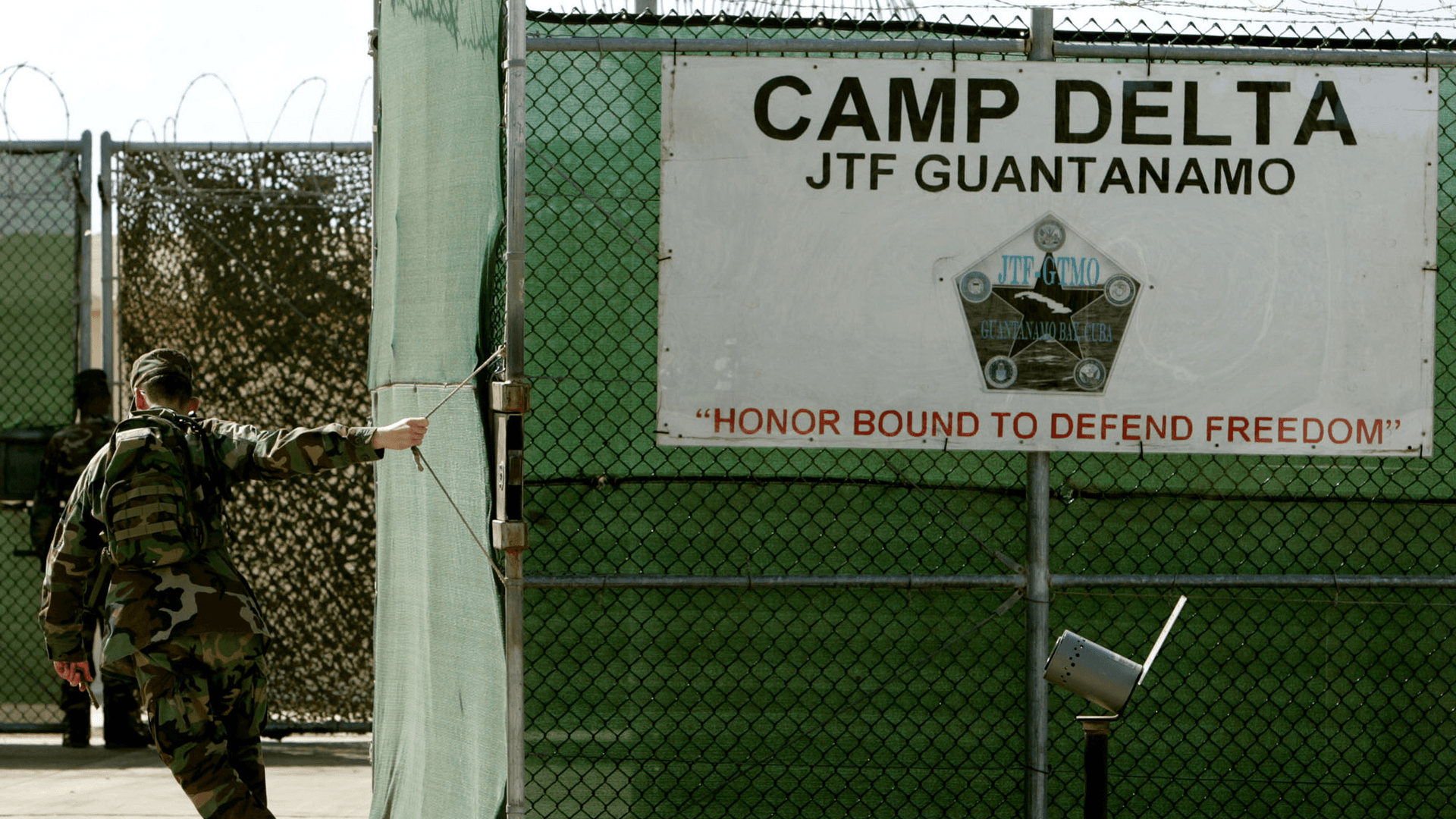Soldier closes gate as military tribunals continue At Guantanamo Bay.
On Wednesday the Department of Defense announced 10 additional detainees would be released from the Guantanamo Bay prison camp, lowering the population of detainees to 93. All of the 10 people released Wednesday were from Yemen, a country which makes up the majority of the remaining detainees.
Yemen is engaged in an intense civil war, which has made the US government unwilling to release detainees there. In this case, the detainees were relocated to neighboring Oman.
Jason Leopold of Vice News says this is not the first time that Oman is taking in Guantanamo detainees. He says they agreed to take another 10 prisoners last year. He says the detainees sent to Oman have been comfortable, versus the ones who were sent to Uruguay and Kazakhstan, “where they truly feel like foreigners.”
As for what Oman gets out of taking these detainees, Leopold says he's spent years trying to get that information from the US government, without any luck. Even 14 years into the program, the public knows very little about those detained, and what information is available comes in large part from leaked documents and legal challenges. Even the spelling of several names in the Department of Defense press release announcing the resettlement conflicts with court filings, and other military documents.
“These are some of the most sensitive and secret documents that exist within the government right now,” Leopold says. “They will not release anything.” Leopold himself has a Freedom of Information Act lawsuit against the State Department to try and get access to the documents.
Officially, governments in Oman and Ghana, which took another group of detainees recently, say that they are taking in detainees as a humanitarian gesture. But Leopold adds that money is involved too.
“[They get] several hundred million dollars from the US,” he says. In some cases, the US provides other forms of aid.
US officials have said that there will be at least another three releases this month alone. President Barack Obama has said he wants to close the prison down before he leaves office, but the clock is ticking.
“The administration is working around the clock to try and identify governments that will take them [the prisoners],” Leopold says.
Here's a look at what we know about the 10 men released this week.
Fahed Abdullah Ahmad Ghazi was recommended for release in 2010.

Samir Naji al-Hasan Muqbel was one of the first detainees transferred to Guantanamo Bay on January 11, 2002, according to Department of Defense documents.

Adham Mohamed Ali Awad was also transferred to Guantanamo Bay in January of 2002. He filed a habeas corpus petition that a judge ruled against in 2010. That same year he was cleared for release, but remained detained until this Wednesday.

Mukhtar Yahya Naji al-Warafi was transferred to Guantanamo Bay in May 2002. When President Obama declared an end to the war in Afghanistan, Al-Warafi filed suit, saying an end to the war invalidated the circumstances of his detention. A US judge ruled differently.

Abu Bakr Ibn Muhammad al-Ahdal entered Guantanamo Bay January 14, 2002.

Muhammad Salih Husayn al-Shaykh No information available
Muhammad Said Salim Bin Salman was transferred to Guantanamo Bay on February 8, 2002.
Said Muhammad Salih Hatim was recommended for transfer in 2010 after arriving in Guantanamo Bay on June 12, 2002.

Umar Said Salim al-Dini was incarcerated at Guantanamo Bay February 15, 2002. A habeas corpus petition was submitted on his behalf in 2007, though the results were not released by the Department of Defense. In 2010, a review panel recommended his detention continue.

Fahmi Abdallah Ahmad Ubadi al-Tulaqiarrived in Guantanamo Bay June 19, 2002 and was released on Wednesday.
The 93 remaining detainees fall into three categories, according to David Frakt. Frakt is a defense attorney and also a JAG in the Air Force Reserve, and has worked with Guantanamo detainees for a decade.
“There are ten that are facing criminal charges; they’re at some point in the process of a Military Commission trial,” says Frakt. “There are 34 who were cleared for release back in 2009 that are still awaiting transfer. And then there are 49 who are in the category of very dangerous/too dangerous to release/pose a national security threat. And those are the biggest stumbling block to closing Guantanamo, because there’s no place we can currently transfer them.”
By law, these detainees deemed too dangerous cannot be transferred to US soil for trial or detention.
“One possibility would be to transfer them to detention in another country. But I am not aware of any country that’s offering to take them, or certainly that many, off our hands.”
Most of the 34 cleared for release in 2009 are still in detention because they’re from Yemen. Congress has imposed restrictions making it difficult for the Secretary of Defense to send detainees back to Yemen because of the conflict there.
Frakt says Guantanamo is really “a political fooball.”
Opponents of closure argue the prison “keeps us safe,” says Frakt, while supporters of closure talk about how it remains “a fertile propaganda tool for recruiting additional terrorists.”
Frakt thinks it very unlikely that President Obama will see the end of the prison at Guantanamo before he leaves office.
